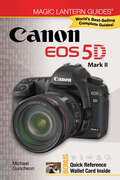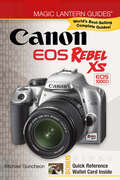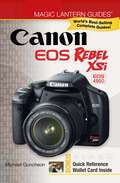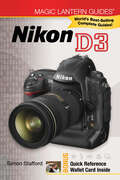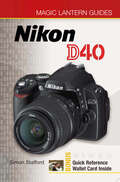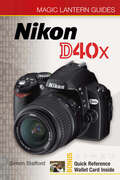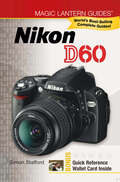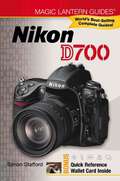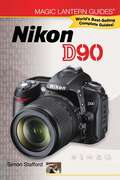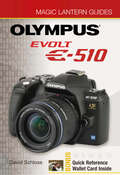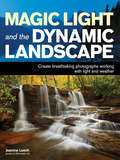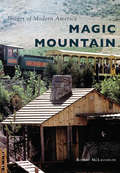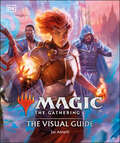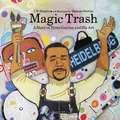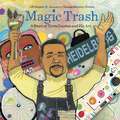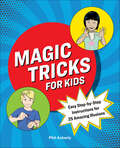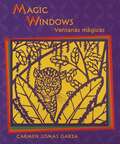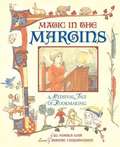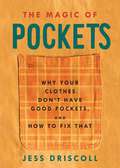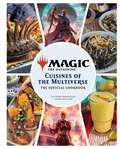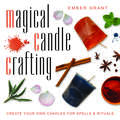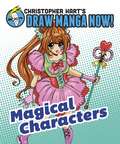- Table View
- List View
Magic Lantern Guides®: Canon EOS 5D Mark II (Magic Lantern Guides®)
by Michael Guncheon- Will help owners of this just-released Canon model master the camera’s new full 1080p HD video recording mode along with the other outstanding features on this highly innovative compact, full-frame digital SLR camera.
Magic Lantern Guides®: Canon EOS Rebel XS EOS 1000D (Magic Lantern Guides®)
by Michael Guncheon- This is the latest in Canon’s entry- level, best-selling Rebel camera series. The lightest D-SLR on the market, it offers high-value features, including 10.1 megapixels and Canon quality.
Magic Lantern Guides®: Canon EOS Rebel XSi EOS 450D (Magic Lantern Guides®)
by Michael GuncheonThe Canon EOS Rebel X line of consumer-oriented D-SLR cameras has made its indelible mark on the market. Canon sells tons of these models—and that’s why the Magic Lantern Guides and DVDs that explain how to use them are bestsellers too. The Rebel XSi (the EOS 450D outside of North America) is the most recent update, and it’s bound to be a hit with its 12.2 MP sensor; fast-focusing 9-point AF system; and large 3.0-inch LCD monitor with Live View function. Released right alongside this fabulous camera, Magic Lantern’s book and DVD will be a must for every XSi owner.
Magic Lantern Guides®: Nikon D3 (Magic Lantern Guides®)
by Simon Stafford- Perfect for professional photographers, this book offers an extremely thorough guide to every feature, function, menu setting, custom setting, and image processing function on this extremely complex FX-format pro model. - Written by a highly regarded technical expert on Nikon gear, and our topbest-selling Magic Lantern Guides® author.
Magic Lantern Guides®: Nikon D300 (Magic Lantern Guides®)
by Simon StaffordSimon Stafford, the Technical Editor to the Nikon Owners’ Club International’s Nikon Owner magazine, tells all about the company’s new semi-pro camera, the D300. He explains how to make the most of the model’s up-to-the-minute attributes, including the 12.3 effective megapixel Nikon DX-format CMOS image sensor with integrated A/D converter and the increased bit precision of selectable 14-bit NEF (RAW) output.
Magic Lantern Guides®: Nikon D40 (Magic Lantern Guides®)
by Simon StaffordNikon’s success in the D-SLR market has been outstanding, and the new D40 is sure to be yet another sales sensation. Written by Simon Stafford, this Magic Lantern manual gives owners all the information they need to understand and operate their camera. It explains every feature and function, plus the in-camera processing and file formats, menus and the LCD monitor, operation modes, flash, lenses, working with the computer, and much more. It’s a must-have to make the most out of this great piece of equipment.
Magic Lantern Guides®: Nikon D40x (Magic Lantern Guides®)
by Simon StaffordNikon’s smallest digital SLR—a sister camera to the D40 with even more megapixels and a few minor feature changes—combines a 10.2-megapixel CCD with a simple, intuitive operation designed so that everyone can successfully take great, high-resolution pictures. With this Magic Lantern Guide®, proud new owners of this wonderfully portable camera will be able to take full advantage of its cutting-edge digital technologies, including the great viewfinder that helps even beginners improve their composition, the large LCD monitor, wide viewing angle, invaluable built-in Help Menu, superb resolution power that assures good printing quality, and Nikon’s exclusive 3D Color Matrix Metering II system.
Magic Lantern Guides®: Nikon D60 (Magic Lantern Guides®)
by Simon StaffordPhotographers will be happy to see this successor to Nikon’s user-friendly D40x. Small and light, it’s perfect for those moving up from compact digital cameras. And it’s better than ever, with its enhanced Retouch menu options; new EXPEED digital image processing for refined tone and color; lightning-like start-up time; and Active D-Lighting that improves image quality in high-contrast conditions. Magic Lantern DVD Guide provides a perfect introduction to the model, while the book, written by Nikon expert Simon Stafford, will take them even more deeply into the camera’s every function.
Magic Lantern Guides®: Nikon D700 (Magic Lantern Guides®)
by Simon Stafford- Simon Stafford has written a key technical guide to every feature on this high-end, semi-pro model.- Stafford is our top-selling Magic Lantern author, and technical editor of Nikon User Magazine, so this guide is a must- have for anyone investing in this highly complex model.
Magic Lantern Guides®: Nikon D90 (Magic Lantern Guides®)
by Simon Stafford- The first DSLR with high definition movie capability demands new skills and techniques, and this is the only guide that can help the advanced amateur master them- Written by best-selling author and Nikon technical expert Simon Stafford
Magic Lantern Guides®: Olympus EVOLT E-510 (Magic Lantern Guides®)
by David SchlossOlympus has always had a reputation for its innovative, compact single-lens-reflex (SLR) camera design, and this new model lives up to its predecessors. With a 2.5-inch Live View LCD monitor, 10-megapixel imaging sensor, and proven dust reduction system for clear, spot-free photographs, the EVOLT E-510 will be a major contender—and this Magic Lantern Guide is the place to go to learn how to use all its fabulous features of this major digital SLR contender. Photographers will find out how they can compose shots from a variety of angles other consumer digital SLR’s can’t match; how to make the most of the camera’s capability to capture crisp, high-resolution images; and how get the most blur-free pictures possible thanks to the EVOLT E-510’s mechanical image stabilization.
Magic Light and the Dynamic Landscape
by Jeanine LeechIt has been said many times that photography is painting with light, or that photography is all about light. For Jeanine Leech, the idea of painting with light is a passion. She uses it as a brush for color, texture, and dimension to create dynamic and expressive images. In this book, Leech details her techniques for finding and using the best light to create breathtaking landscape images.To get that special moment, you are often chasing the light. In landscape photography there are moments of defining light. It can be a single moment that may only last a second when the light is just perfect. These moments don't happen every day but when they do one frame can tell the story with more visual impact than all the others. The ability to improvise, to stop and get the light when these moments occur randomly, is the difference between producing a standard photo and something that truly stand out.This book provides the basic principles of photography necessary for capturing this magic successfully. Starting with a rundown of the equipment that Leech uses and explaining the core concepts of photography, the book proceeds to detail shooting at different times of day. From the first light at dawn, through midday and onto dusk, Leech provides stunning examples of how each type of light can be used. Each photo in the book is accompanied by the camera settings used to capture it.True magic light is rare. It happens in a fleeting moment, not to be repeated again, lasting only a few minutes or seconds. Its quality is so unique that it changes the color, appearance and ultimately the mood of the subjects it falls upon. Part three of the book focuses on the different types of landscapes. First weather is covered. A photo shoot in the Smoky Mountains shows how attention to detail and setting can make the shot. The light and the weather change in mere seconds. As Leech points out, knowing the basics of photography and how to work your equipment quickly is essential. Each of the stunning photos in the book is a testament to this. After that Leach discusses how she chooses different landscapes. Intimate landscapes can be found anywhere. Sometimes making artistic choices like only focusing on a small portion of a setting provides an image with greater impact. Finally, the book covers the use of polarizer's, various filters and multiple digital darkroom techniques.
Magic Light and the Dynamic Landscape
by Jeanine LeechIt has been said many times that photography is painting with light, or that photography is all about light. For Jeanine Leech, the idea of painting with light is a passion. She uses it as a brush for color, texture, and dimension to create dynamic and expressive images. In this book, Leech details her techniques for finding and using the best light to create breathtaking landscape images.To get that special moment, you are often chasing the light. In landscape photography there are moments of defining light. It can be a single moment that may only last a second when the light is just perfect. These moments don't happen every day but when they do one frame can tell the story with more visual impact than all the others. The ability to improvise, to stop and get the light when these moments occur randomly, is the difference between producing a standard photo and something that truly stand out.This book provides the basic principles of photography necessary for capturing this magic successfully. Starting with a rundown of the equipment that Leech uses and explaining the core concepts of photography, the book proceeds to detail shooting at different times of day. From the first light at dawn, through midday and onto dusk, Leech provides stunning examples of how each type of light can be used. Each photo in the book is accompanied by the camera settings used to capture it.True magic light is rare. It happens in a fleeting moment, not to be repeated again, lasting only a few minutes or seconds. Its quality is so unique that it changes the color, appearance and ultimately the mood of the subjects it falls upon. Part three of the book focuses on the different types of landscapes. First weather is covered. A photo shoot in the Smoky Mountains shows how attention to detail and setting can make the shot. The light and the weather change in mere seconds. As Leech points out, knowing the basics of photography and how to work your equipment quickly is essential. Each of the stunning photos in the book is a testament to this. After that Leach discusses how she chooses different landscapes. Intimate landscapes can be found anywhere. Sometimes making artistic choices like only focusing on a small portion of a setting provides an image with greater impact. Finally, the book covers the use of polarizer's, various filters and multiple digital darkroom techniques.
Magic Mountain (Images of Modern America)
by Robert MclaughlinNestled in the foothills of Golden, Colorado, construction started on Magic Mountain just two years after Disneyland's opening season. Through never-before-seen photographs, Magic Mountain tells the exciting story of the first attempt in America to spread the Disneyland model. The dream of a theme park in Colorado was conceived by Walter F. Cobb and designed by Marco Engineering of Los Angeles. The park saw tens of thousands of visitors, even during the construction period. They witnessed live gunfights and playhouse melodramas and took a ride on the Magic Mountain Railroad. Unfortunately, the park closed at the end of its premier season in 1960, but it would eventually evolve into Heritage Square. For over 40 years, this venue brought fun and entertainment to the young and young at heart, following Cobb's vision of a clean, entertaining, and educational park for the whole family.
Magic The Gathering The Visual Guide
by Jay AnnelliExplore the planes of magic on a spellbinding journey of discoveryMagic: The Gathering is a fantastical Multiverse of mystical beings, fabled realms, and mythical creatures. Dominating all are the mighty sorcerers known as planeswalkers. To be a planeswalker is to be powerful beyond measure—a wizard who can bend magic to their will and step through the veil of reality itself. These fearsome mages cross between the planes of existence, battling to save others or to destroy them, to fight darkness or to create it. Magic: The Gathering Visual Dictionary illuminates the wondrous worlds they traverse, reveals their arcane lore, weapons, artifacts, and spells, and recounts their legendary exploits. Produced in close collaboration with Wizards of the Coast and featuring never before published profiles of new planes, such as Strixhaven and Kaldheim, this book is the first time MTG&’s key characters and locations are showcased in one sumptuous, indispensable, and up-to-date guide to its vast and expanding Multiverse.© 2022 Wizards of the Coast LLC
Magic Trash
by J. H. ShapiroVacant lots. Abandoned houses. Trash--lots of trash. Heidelberg Street was in trouble! Tyree Guyton loved his childhood home--that's where his grandpa Sam taught him to "paint the world. " So he wanted to wake people up. . . to make them see Detroit's crumbling communities. Paintbrush in hand, Tyree cast his artistic spell, transforming everday junk into magic trash. Soon local kids and families joined Tyree in rebuilding their neighborhood, discovering the healing power of art along the way. This picture book biography of Tyree Guyton, an urban environmental artist, shows how he transformed his decaying, crime-ridden neighborhood into the Heidelberg Project, an interactive sculpture park. The story spans from Tyree's childhood in 1950s Detroit to his early efforts to heal his community through art in the 1980s.
Magic Trash: A Story of Tyree Guyton and His Art
by J. H. ShapiroVacant lots. Abandoned houses. Trash--lots of trash. Heidelberg Street was in trouble!Tyree Guyton loved his childhood home--that's where his grandpa Sam taught him to "paint the world." So he wanted to wake people up... to make them see Detroit's crumbling communities.Paintbrush in hand, Tyree cast his artistic spell, transforming everyday junk into magic trash. Soon local kids and families joined Tyree in rebuilding their neighborhood, discovering the healing power of art along the way.This picture book biography of Tyree Guyton, an urban environmental artist, shows how he transformed his decaying, crime-ridden neighborhood into the Heidelberg Project, an interactive sculpture park. The story spans from Tyree's childhood in 1950s Detroit to his early efforts to heal his community through art in the 1980s. Tyree's awards include Michigan Artist of the Year and International Artist.MAGIC TRASH offers strong themes of working together, the power of art, and the importance of inspiring community--especially kids--to affect action. The Heidelberg Project is internationally recognized for providing arts education to children and adults and for the ongoing development of several houses on Heidelberg Street. Not only does the Heidelberg Project prove that when a community works together it can rebuild itself, but it also addresses the issues of recycling, environmentalism, and community on a global level.
Magic Tricks for Kids: Easy Step-by-Step Instructions for 25 Amazing Illusions
by Phil AckerlyLearn magic and performance skills with 25 astounding magic tricks!Want to learn how to levitate a coffee cup? Magically double your money? Become a mind reader? Discover the secrets to these tricks and more in Magic Tricks for Kids. Watch jaws drop as you perform these wonderful illusions using simple, step-by-step instructions and homemade props.Gain confidence with easier tricks at the start of the book before moving on to more complex magic tricks that require sleight-of-hand skills. Finally, learn some spellbinding card tricks and how to make items appear out of thin air! You'll wow your family and friends while learning the art of a mesmerizing performance.Magic Tricks for Kids includes:DIY magic—All the magic tricks use simple household objects, making them easy to perform anytime. A chapter on magical crafts also shows you how to make a magic wand, a magic box, and a magic table to help you put on fantastic shows at home.The code—Learn the respected "Magician's Code," including the most important rule—never reveal how the trick is done.More than magic—With sample scripts to go along with each trick, you'll learn the art of patter—injecting your performance with comedy, suspense, and surprise!With Magic Tricks for Kids, you'll blow minds and astonish your friends.
Magic Windows (Ventanas Magicas)
by Carmen Lomas GarzaThrough the magic windows of her cut-paper art, Carmen shows us her family, her life as an artist, and the legends of her Aztec past. An accompanying workbook is described below.
Magic in the Margins: A Medieval Tale of Bookmaking
by W. Nikola-LisaSimon is anxious to draw in one of Father Anselm's manuscripts. But before he can do that, he must solve Father Anselm's puzzle.
Magic of Pockets, The: Why Your Clothes Don't Have Good Pockets and How to Fix That
by Jess DriscollTransform your wardrobe with this step-by-step guide to sewing pockets into your favorite clothes. With simple instructions and line drawings, this book teaches six basic pockets, with suggested alterations to customize each pocket to your wardrobe needs, while learning the history of what pockets looked like and why they remain a political tool today. All the projects are designed for beginner sewists, and most can be made by hand, with no specialty tools or machine required.For every pair of pants with the pockets sewn shut, for every skirt with nowhere to put your hands, for every jacket missing a place to put your cash, there is one dress with pockets big enough to hold your entire world. Finding that one feels like finding a lucky clover among the grass. But clothes with pockets should not be so rare. There are reasons why (spoiler alert: it&’s about patriarchy and capitalism!), and this book will teach you some of the history of fashion and politics, but more importantly, this book will teach you how to fix the problem yourself. With the skills in this book, you can make your old clothes useful again. This book is for sewists who don&’t always have the time and energy to make a whole garment, and it&’s also for those beginners who have never used a needle and thread. This book is for people who aren&’t satisfied with clothes as they are and want to make a change. Most of all, this book is for everyone, because everyone deserves pockets.
Magic: Cuisines of the Multiverse
by Jenna Helland Victoria RosenthalPlaneswalkers! Feast your way through Magic: The Gathering with this first-ever official cookbook inspired by the beloved game.Featuring more than 70 recipes inspired by Magic: The Gathering, this cookbook takes readers on a journey through the beloved game with easy-to-follow recipes.With beautiful full-color photography as well as art from the game, Magic: The Gathering: The Official Cookbook is a must-have for foodies and fans alike.OVER 70 RECIPES: Includes over 70 recipes from snacks to desserts inspired by game lore and utilizing real-world ingredients.MAKE YOUR GATHERING MAGIC: Make delicious dishes inspired by the game to serve at game nights or any gathering.INSPIRING PHOTOS: Beautiful full-color recipe photos help ensure success.LEVEL UP: Recipes range from simple to sophisticated for home chefs of every skill level.OFFICIALLY LICENSED COOKBOOK: Created in collaboration with Wizards of the Coast, this is the only officially licensed Magic: The Gathering cookbook.
Magical Candle Crafting: Create Your Own Candles for Spells & Rituals
by Ember GrantWould you like to add a spark of enchantment to your spiritual path and light up your home with a special, warm glow? Candle making is a fun and powerful way to infuse personal energy into your practice and your life.Filled with creative candle recipes and spells, Magical Candle Crafting is a friendly, hands-on guide to making votive candles using inexpensive, easy-to-find items. Ember Grant takes you through each step, from mixing and pouring the wax to choosing magically potent ingredients to charging your candle with energy. Learn to craft candles for rituals specific to the elements, days of the week, chakras, moon phases, planets, and all sabbats on the Wheel of the Year. Discover how to make spell candles for prosperity, love, romance, healing, inspiration, and each of your goals. Further empower your creations with timing guidelines, plus:Inspiring design and decoration ideasRecipes for meditation, rejuvenation, grounding, and mood enhancementSuggestions for herbs, essential oils, crystals, chants, symbols, and other helpful correspondences
Magical Characters: Christopher Hart's Draw Manga Now! (Christopher Hart's Draw Manga Now!)
by Christopher HartMagical Characters teaches readers how to draw in the whimsical and imaginative style of manga that has given rise to such fan favorites such as Sailor Moon and Naruto. Including lessons on fantastical clothing, characters types and their magical powers, and even magical beasts, this book covers everything readers need to go from manga fans to fantasy manga artists. After an introduction to these elements, readers will have a chance to follow along Hart's in-depth step-by-steps, and will even be invited to draw on their own, right in the book's pages.
Magical Crochet: 13 Charming Patterns for Imaginative Crowns, Wings, Unicorns, and More
by Jeanette Bøgelund BentzenThe 13 projects are eye-catchingly original and range in difficulty from simple to complex. Each features elements made from yarns that are shiny or glittering or offer some other magical gleam. All offer variations and customizing options for the creative crochet fan to enjoy, and result in beautiful items that can be used to decorate, wear, or play with. The projects are useful anywhere, from living rooms to fantasy worlds, and include essentials like a play crown that can be made in two heights, a backpack with a range of motifs to choose from, a banner perfect for any room, a protective sun hat, a rideable hobbyhorse unicorn, and a set of amazing wings to wear. These delightful designs reflect the reliably successful patterns and instructions that the author's known for among her design customers on Ravelry, at her shop aircrochet.com, and on her social media channels. The 13 projects here are inspired by the author's eureka moment early in her motherhood, when she noticed that children always choose the option that has glitter, and that they agree it's always better to be a unicorn.
